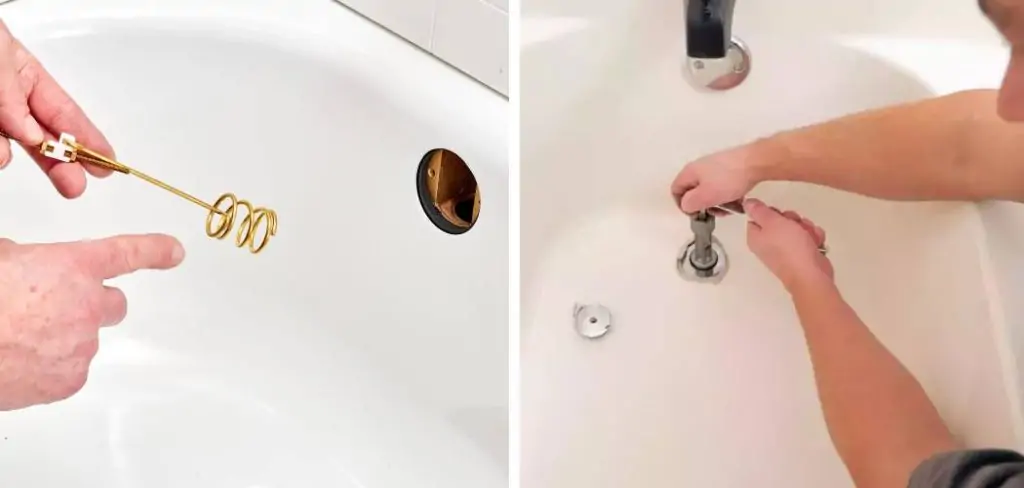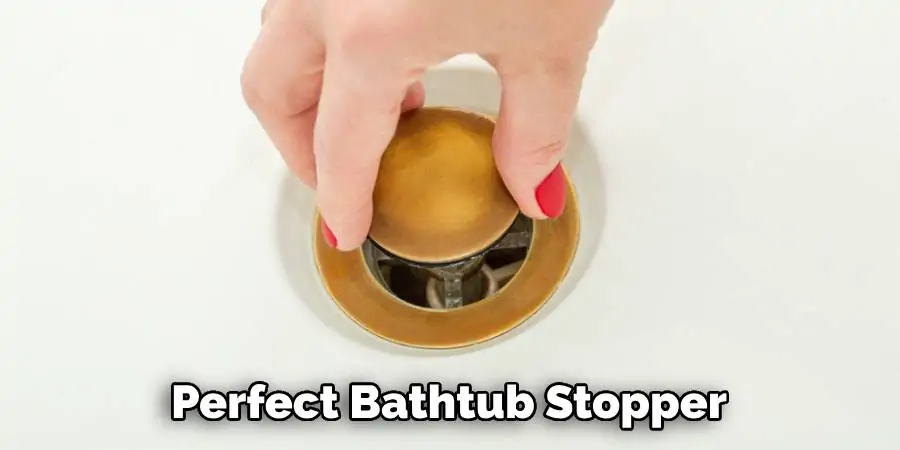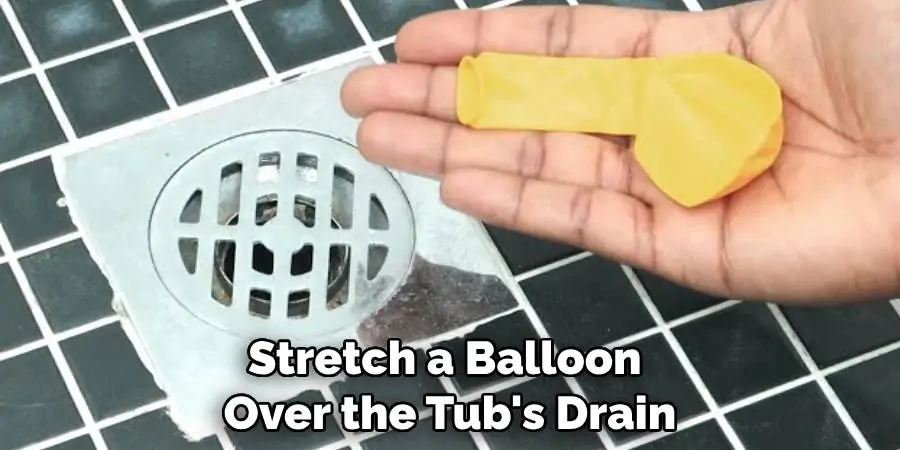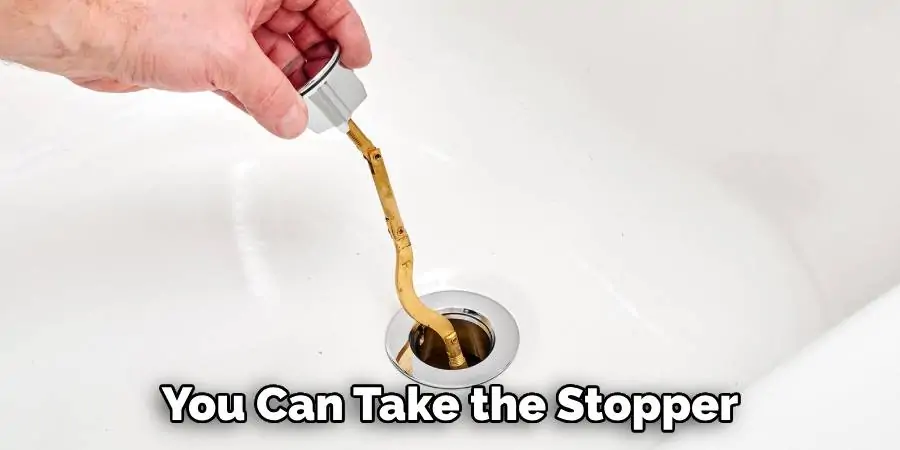Having a stopper in your bathtub is essential for keeping the water inside the tub while you enjoy a relaxing bath. But what happens when you realize that your stopper is missing or broken? Don’t worry, there are still ways to plug your bathtub without a stopper. In this guide, we will explore various methods for how to plug bathtub without stopper, ensuring that your bathing experience remains uninterrupted.
From household items you can repurpose as temporary stoppers to more permanent DIY solutions, there are plenty of options to consider. Whether you’re in a pinch and need a quick fix or are looking for a long-term solution, this guide will provide you with easy and efficient ways to keep the water in your tub without the need for a traditional stopper.

What is the Plug in a Bathtub?
Before discussing how to plug a bathtub without a stopper, it’s important to first understand what the plug in a bathtub is and its purpose. The plug, also known as the drain or stopper, is a mechanism that seals the drain of your bathtub to hold water in the tub while you bathe. It prevents water from draining out and allows you to control the depth of the water in your tub. Without a plug, you won’t be able to fully enjoy a bath, as the water will continuously drain out.
How to Plug Bathtub Without Stopper: 8 Clever Solutions
Dealing with a bathtub devoid of its stopper can seem like a giant hassle, especially when all you want is a relaxing bath at the end of a long day. But fear not, as ingenuity and everyday items can come to your rescue! This listicle presents eight ingenious ways to plug your bathtub without the need for a stopper. Not only are these methods simple and effective, but they also show how resourceful you can be in a pinch.
1. The Plastic Bag Method
One of the simplest solutions is the trusty plastic bag. Grab a standard-sized plastic bag (clear is best, so you can see that it doesn’t cover the overflow drain) and push it into the drain hole. Make sure it’s airtight. If the bag is too large, fill it with water to weigh it down. If it’s too small, use a rubber band to secure it to the drain. The pressure, combined with the weight of the water, should keep it in place.
2. Cap It Off with a Bottle Cap
Often overlooked, a bottle cap can be the perfect bathtub stopper in a pinch. A cap from a large beverage bottle, like those rinsed after using a sports drink, fits nicely into most bathtub drains. This is a safe and effective technique if you use a cap that is both wide enough to cover the hole and weighty enough not to float away.

3. Shower in a Pinch – Use Duct Tape
Duct tape may not be the most elegant solution, but it is one of the most versatile. Cut a piece large enough to cover the drain and some surrounding area. Smooth it down to create a water-tight seal. Just remember to remove it carefully afterwards, as it might leave behind some adhesive residue.
4. Make a “Stopper” Out of an Old Towel
Convert an old towel into a makeshift stopper by cutting out a small, towel-sized piece and rolling it tightly to form a tube. Use rubber bands to secure it in the shape of a donut, and then place it over the drain. The towel’s fabric will expand in the water, providing a snug fit to hold the water in.
5. Sink or Float with a Suction Cup
If you have a suction cup with a hook, use that to plug your drain. Wet the rim of the suction cup to enhance the seal, push it into place over the drain, and hook the cord over the tap to keep it secure. With the added advantage of being easy to remove, this method is perfect if kids are involved, as it doubles as a fun activity.
6. Get Crafty with a Balloon Seal

Balloons are not just for parties – they can also save the day in the bath. Stretch a balloon over the tub’s drain and inflate it. The balloon’s pressure will keep it in place and the narrow stem gives you the option to adjust how tightly it seals. Just be sure to use a sturdy balloon and to tie it off securely.
7. Employ the Power of a Wet Cloth
Substitute a stopper with a simple, wet cloth. Drape a cotton or microfiber cloth over the drain and push it down with the palm of your hand. The cloth should effectively block the flow of water if it’s large enough and well-wetted. Hold the edges in place for a moment to create a partial vacuum, and you’re good to go.
8. Create a Sink Stopper
Finally, if you have a sink or another stoppered drain in your home, you can take the stopper from there. These stoppers are often similar in size and structure to those designed for bathtubs. Just make sure to sanitize it thoroughly before and after use. Remember, safety first—never leave the bathtub unattended with any kind of stopper in place.
We hope you never have to bathe without a stopper, but with these creative solutions, you’re now armed with the know-how to ensure that a missing stopper never stands in the way of a good soak. Enjoy your bath time, and revel in the resourcefulness it took to get there!

Why You Might Need to Plug a Bathtub Without Stopper
There are several reasons why you might find yourself needing to plug a bathtub without a stopper. The most common reason is that your existing stopper is missing or broken. This could be due to wear and tear, accidental damage, or simply misplacing it. Another reason could be that you are staying in a hotel or rental property that doesn’t have a stopper for the bathtub. Whatever the case may be, knowing how to plug your bathtub without a stopper will come in handy when you find yourself in these situations.
5 Things to Consider When Using Alternative Methods to Plug Your Bathtub
As convenient and clever as these methods may be, it’s important to keep certain things in mind when using them. Here are five things you should consider when plugging your bathtub without a stopper:
- Safety always comes first. Make sure that whichever method you use is safe and secure before filling up the tub.
- Always monitor the water level and never leave the tub unattended, especially if there are children or pets present.
- Be careful when using items that may have sharp edges or could potentially cause damage to your bathtub.
- Sanitize any item that you plan on using as a stopper before and after use to prevent bacteria growth.
- If possible, try to find a permanent solution to replace your missing or broken stopper, rather than relying on alternative methods for an extended period of time.
Remember, these clever solutions are meant to be temporary fixes and should not replace a properly functioning stopper in the long run.
Frequently Asked Questions
What Are Some Common Causes of Bathtub Drain Clogs
At the heart of a peaceful bath-time oasis, one often finds a silence for lurking in the shadows—bathtub drain clogs. These stealthy disrupters of serenity often stem from an accumulation of all too common adversaries. Hair strands band together like a woven tapestry, entwining with soap scum to form an impenetrable blockage. The insidious buildup of oils and beauty products act as glue, cementing the obstructions and challenging even the most resilient water flow.
When faced with the question of how to plug bathtub without stopper, solutions like using a wet cloth or rubber drain cover can be helpful, but they’re mere sentries against the true culprit. Vigilance in regular cleaning and employing drain protectors can be the knights in shining armor, coming to the rescue in the battle against the dreaded drain clog.

How to Remove a Bathtub Drain Plug?
If you have a drain plug that’s stuck, don’t panic. There are a few tricks that can help loosen it up and remove it safely. Start by spraying some lubricant, such as WD-40 or cooking oil, around the edges of the plug and let it sit for a few minutes. Then, use pliers or a screwdriver to gently twist and loosen the plug. If it still won’t budge, try using a plunger to create suction and pull the plug out. You can also try pouring boiling water over the plug to expand and loosen it. If all else fails, consider calling a professional plumber for assistance.
How to Clean a Bathtub Drain?
Regularly cleaning your bathtub drain can help prevent clogs and keep your drainage system functioning properly. To clean the drain, start by removing any visible debris with a pair of tweezers or a small brush. Then, pour a mixture of baking soda and vinegar down the drain and let it sit for about 15 minutes. Afterward, flush the drain with hot water to remove any remaining residue. You can also use a commercial drain cleaner, but be sure to follow the instructions carefully and use caution when handling these products.
Conclusion
A missing or broken bathtub stopper may seem like a major inconvenience, but with a little ingenuity and resourcefulness, you can easily find alternative methods on how to plug bathtub without stopper. Whether it’s using items found around the house or purchasing inexpensive solutions, there are plenty of options available for temporarily plugging your drain. Just be sure to follow safety precautions and properly clean and maintain your drain to prevent future clogs. With these tips and tricks in mind, you can enjoy a relaxing bath without worrying about a missing stopper. Happy bathing!
